Tracing Roman history in Melrose, Scotland’s most appealing Borders town
Robin McKelvie goes back two millennia to discover what the Romans found most appealing about the market town of Melrose
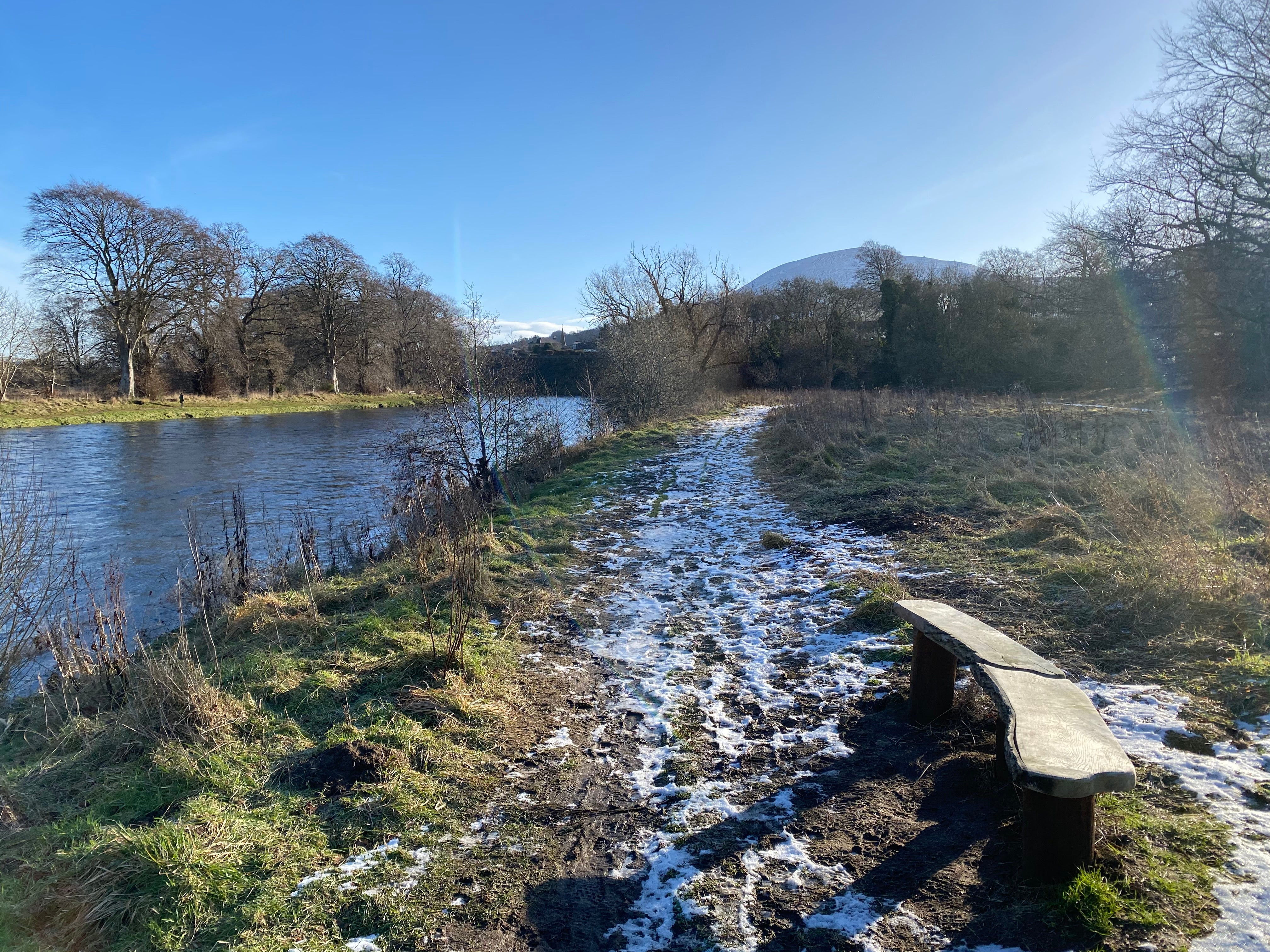
You can see why the Romans made a beeline for Melrose when they bashed north into Caledonia. They were drawn to the trio of sentinel peaks that preside over what today is the most appealing of the Scottish Borders market towns.
Atop the Eildon Hills I’m similarly beguiled, looking out over the cinematic sweep of the Tweed Valley unfurling below. I’m not just here in search of the Romans, though: this is a landscape alive with tales of King Arthur, Robert the Bruce and Sir Walter Scott. Swirl in the Fairy Queen and the imminent arrival of the Great Tapestry of Scotland and this is quite a year to follow in the sandalled steps of the Romans.
As a proud Scot it’s tempting to take pride in the fact that the Romans never conquered Caledonia, instead strapping a Trump-style wall (the Antonine) across the central belt to keep our brave warriors out. The more I explore, though, I reckon maybe they just liked Melrose.
When I hop off the train at Tweedbank on the Borders Railway, which was reopened in 2012 as the largest new railway line in Britain in over 100 years, I’m only an hour from Edinburgh. But soon I’ve travelled back two millennia. After an hour walking the banks of the salmon-rich River Tweed, with its swirling herons and hardy anglers, I arrive in Trimontium, Scotland’s largest Roman site.
I meet George, a stately older gent who might have been a general back in Roman times. He is out walking his Labrador, but spots my interest in the information boards and viewing platforms that sprinkle the site. “They find all sorts of Roman treasures here,” he explains. “They’re always digging up helmets, horse hooves, crockery and the like. Did you know this was the main fortress in Scotland?” I do, but I don’t tell him. I also know it became the main staging post for the building of the Antonine Wall. This dramatic site on a steep mound overlooking the Tweed is bathed in the Romans.
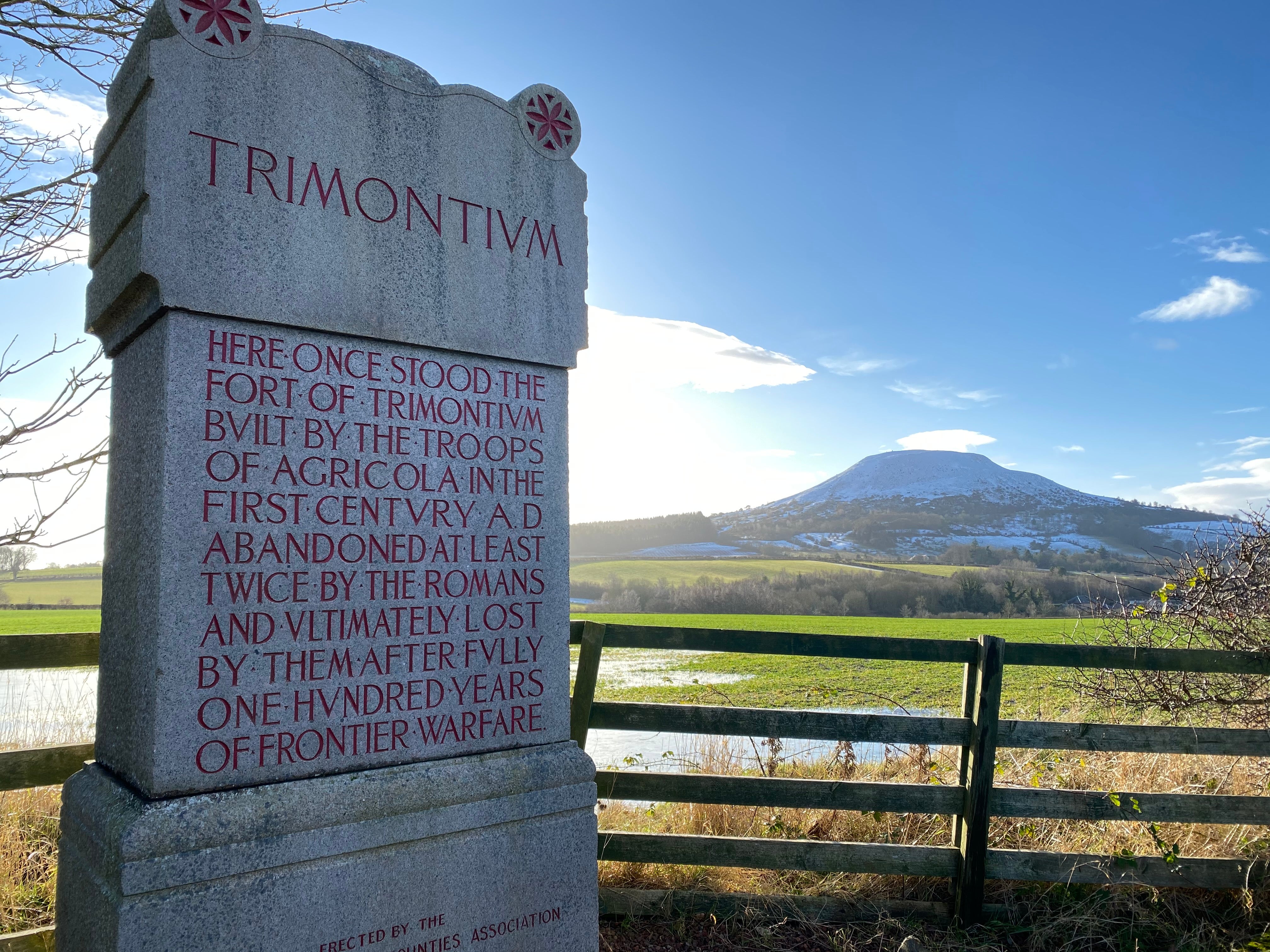
You can find many of the fortress treasures hoarded in the welcoming museum run by the Trimontium Museum Trust in Melrose itself. They offer guided walking tours of Trimontium in normal times too. George points me towards the nearest of the Eildon Hills, once the site of a Roman signal station and hill fort. Seeing my eyes light up, he cautions against tackling it in the snow. I reassure him I’m well equipped – what would my Scottish warrior ancestors have thought if I ducked out?
En route I stumble upon the spot where Sir Thomas de Ercildoun, a Scottish lord, stumbled across the Fairy Queen in the 13th century. Yes, I did say Fairy Queen. After falling asleep he woke to find the beguiling fairy monarch, more accurately the “Queen of Elfland”, beckoning him off to her realm. He thought he had been there for three days; in fact he had disappeared for seven years. “Thomas the Rhymer” became famous for his prophetic powers, and his subsequent ballads have transcended the ages. A stone marks the spot where he fell asleep, next to a more modern memorial. It’s a striking spot overlooking the Tweed Valley in a fold of trees and fields; the sort of place you might expect to meet fairies.
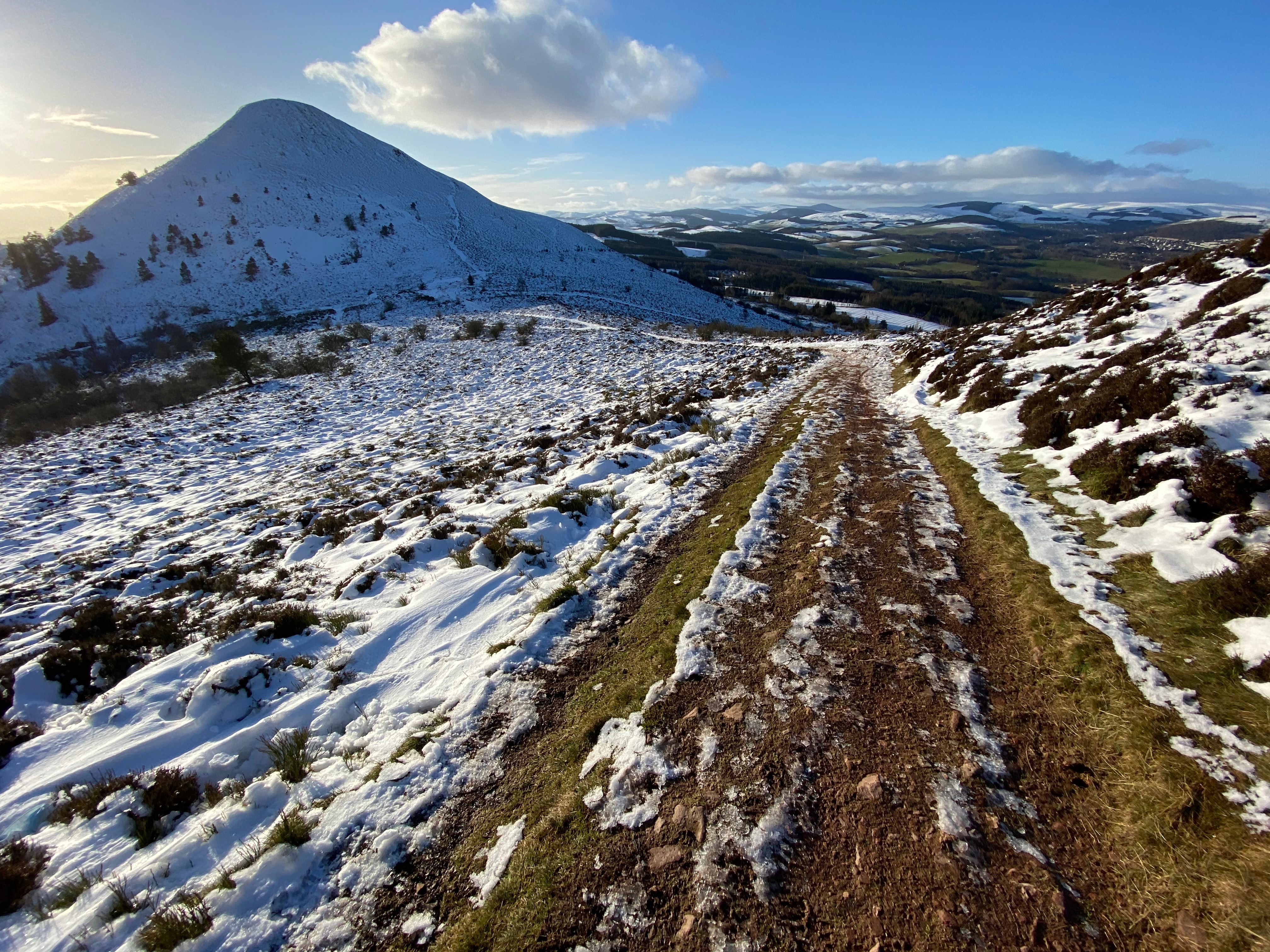
Conscious that my wife and kids might not forgive a seven-year sojourn in fairyland, I bashed off up the most northerly of the Eildon Hills. Route finding was not hard as wooden markers led the way – you can find these handily sprinkled around Melrose’s paths and trails. In Roman times, Trimontium was a fulcrum, a thoroughfare on the road between York and modern day Edinburgh. It’s still a hub – along with the local walks, the coast-to-coast Southern Upland Way, the Borders Abbeys Way and St. Cuthbert’s Way all ripple through, the latter starting here before yomping towards the abbey at Lindisfarne 100km away, across the border into Northumberland.
The effort is worth it as I reach the summit and a celluloid sweep swirls from Melrose, all across the Tweed Valley, south to the Cheviot Hills and on to England. The Romans (as always) chose an ideal spot. The Duke of Buccleuch, Scotland’s largest landowner, thought so too as he now owns the hills. On his land, local legend has it that King Arthur lies buried within what Thomas the Rhymer immortalised as the “hollow hill”.
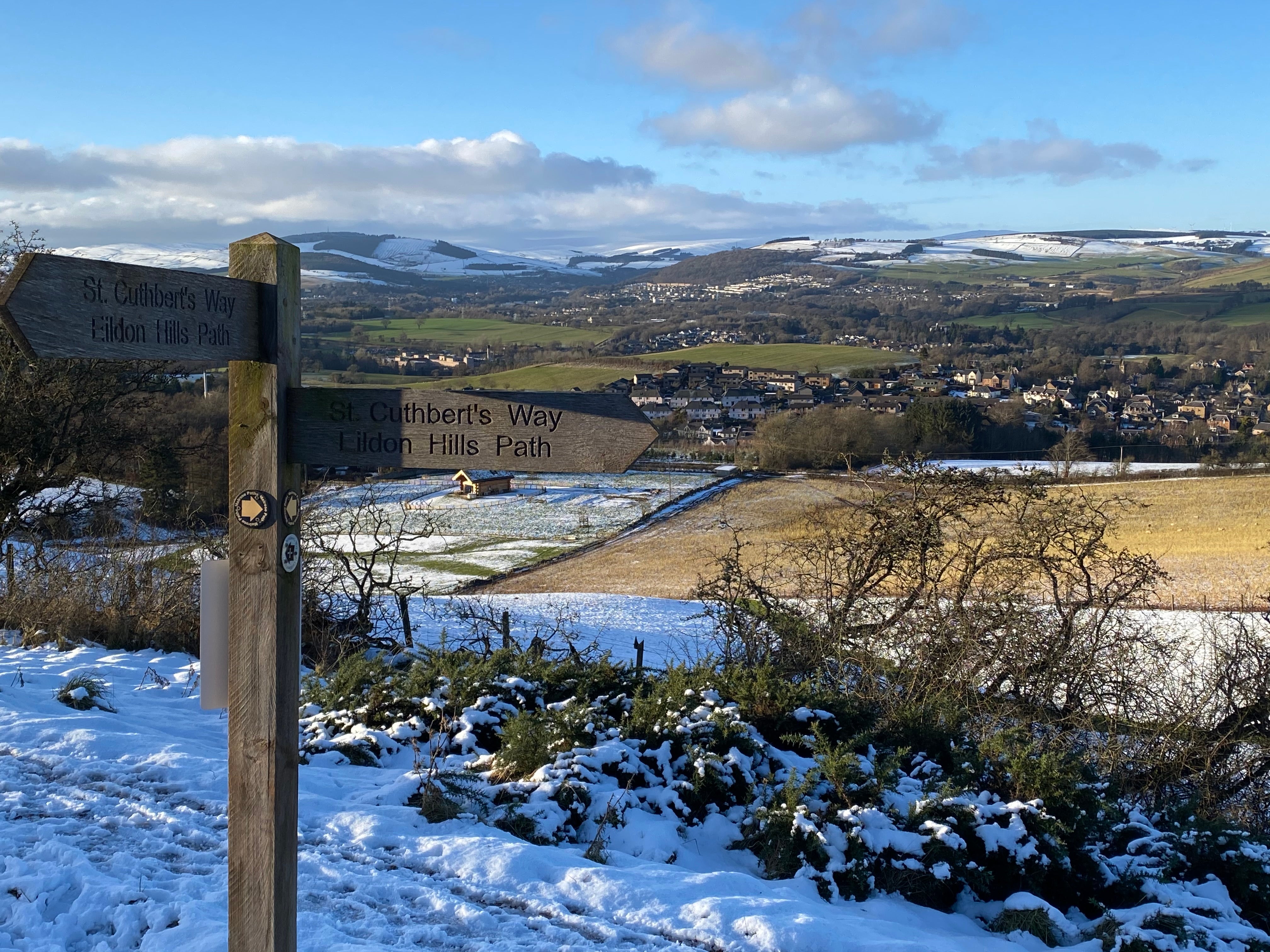
I descend towards Melrose, leaving the other Eildons for another day, and follow a wide track into the town that once would have been smoothed by the sandals of Roman legionnaires. I pop up like a submarine with my snow-covered boots in the picture-postcard Market Square. Melrose is the quintessential Borders market town, all sturdy sandstone buildings, flower beds and wee lanes. After Covid-19 restrictions ease I’ll be back to savour Tweed Valley smoked salmon and Borders lamb at the Townhouse Hotel, flit through the independent delis and shops, and visit the kind of proper butcher and fishmonger we all wish we had near home.
Melrose’s number one site is its vaulting abbey. Commissioned by King David I, with one eye on securing passage with St Peter and the other on demonstrating his wealth and power to England, the abbey is still a grand ruin today, its facade like a time machine that spirits you back to the days when monks whispered around the cloisters below.
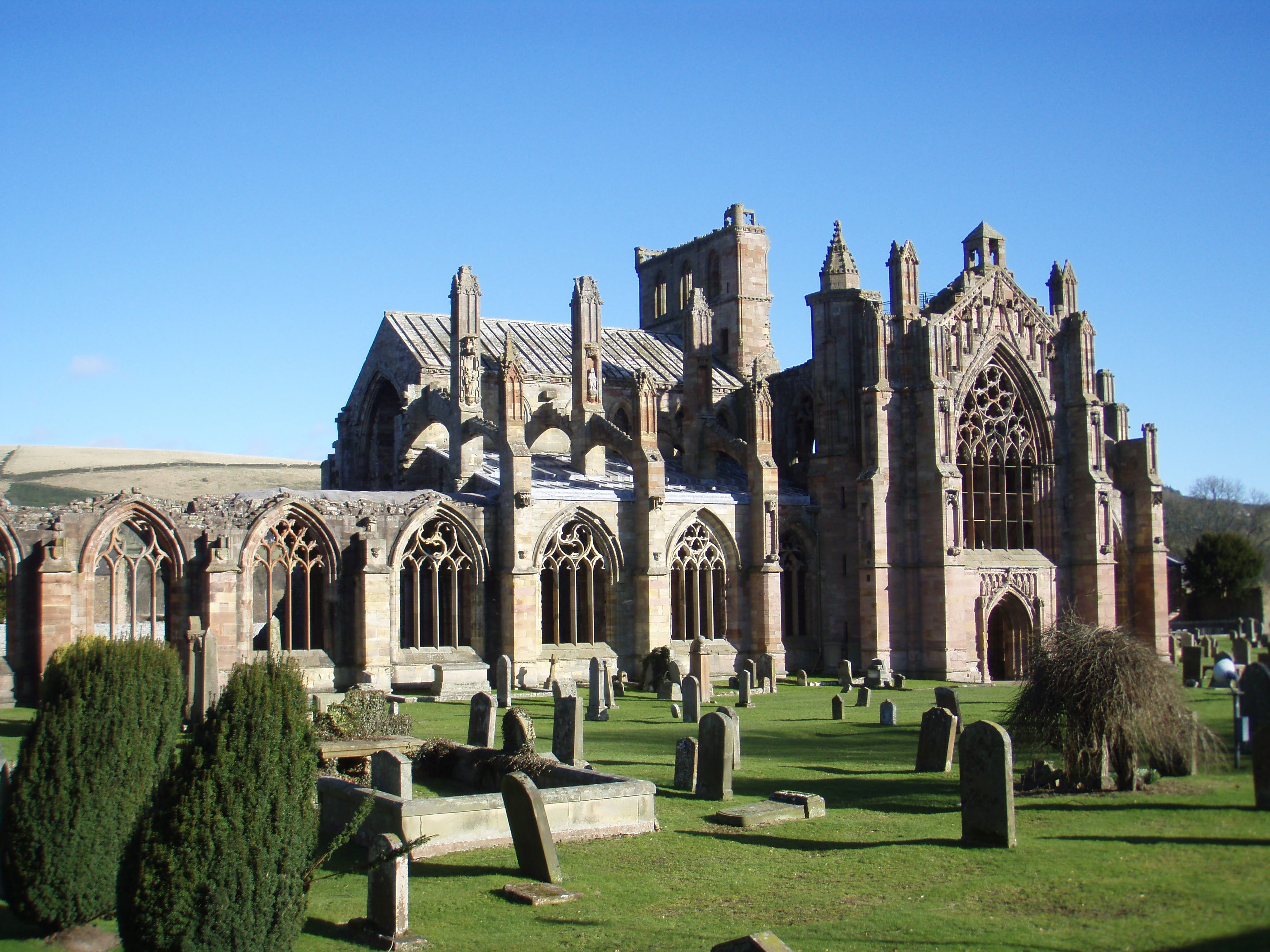
There is not much whispering at the Melrose Sevens, which take over the hallowed fields at the other end of town every year. Rugby’s “sevens” format was invented in Melrose, and as I skip by the bijou stadium that is enshrined on the global rugby map, the nearby green spaces are sprinkled with kids hurling the oval ball around; you seldom see a football in Melrose.
Striving back up the Tweed I’m aware I’m being overtaken by stealthy salmon making their fateful journey back to their birthplace. Like the stoic local fishermen wading in the waters, I cannot see the kings of Scottish fish, but I know they are there. The same goes for Sir Walter Scott. Scotland’s most celebrated writer fashioned a palatial retreat for himself at Abbotsford on the banks of his beloved Tweed. Walking around the deeply idiosyncratic rooms – which contain everything from the volumes of poetry he annotated as a schoolboy through to his beloved Rob Roy collection, consisting of gun, sword, dirk and sporran – it’s as if Scott’s eyes are watching you like paintings in a horror film.
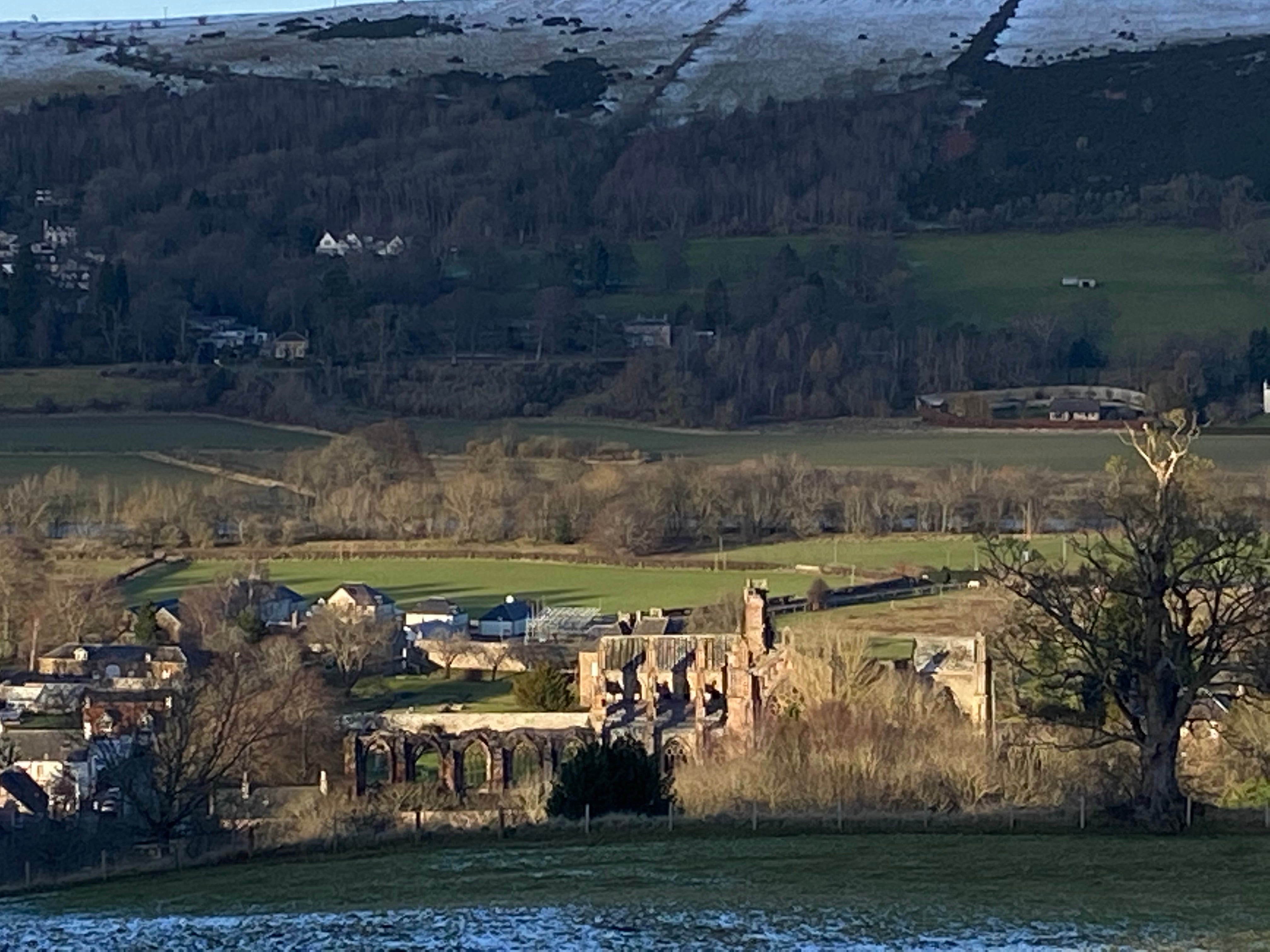
Later this year Galashiels, just a musket shot away, will also propel itself onto Scotland’s cultural map as the new Great Tapestry of Scotland centre opens. This remarkable 160-panel tapestry is Scotland’s modern day Bayeux, covering 12,000 years of Scottish history. You’ve had a head start with the Romans, Robert the Bruce, Walter Scott and Scottish folklore, as they all feature in an epic work I was lucky to catch when it was on display in Stirling Castle. Allow half a day to even begin to take it all in.
Hauling myself back on the train to Edinburgh I reluctantly leave the town, in full agreement with the Romans, King Arthur and Sir Walter Scott, who all found something special in Melrose. It’s a town for our times too, where history ripples through the solid streets, a place where current concerns dissolve as you wander the banks of rivers and hillsides, half expecting Roman legionnaires and fairy queens to drift out of the Eildon shadows.
For more information on Melrose, click here


Join our commenting forum
Join thought-provoking conversations, follow other Independent readers and see their replies
Comments